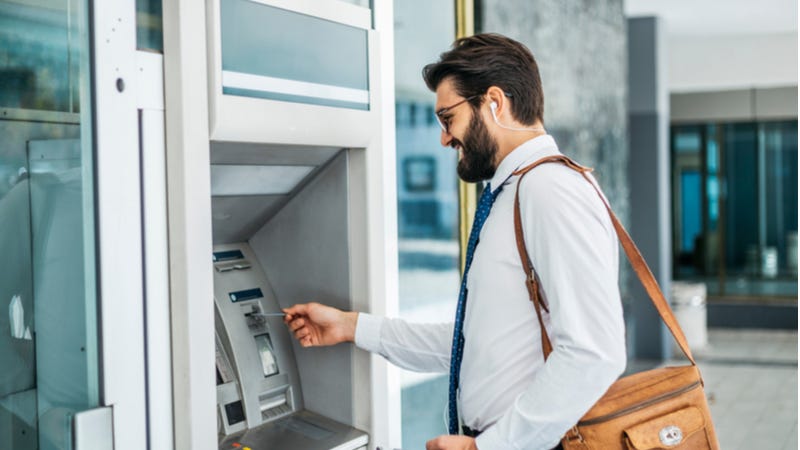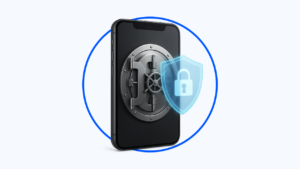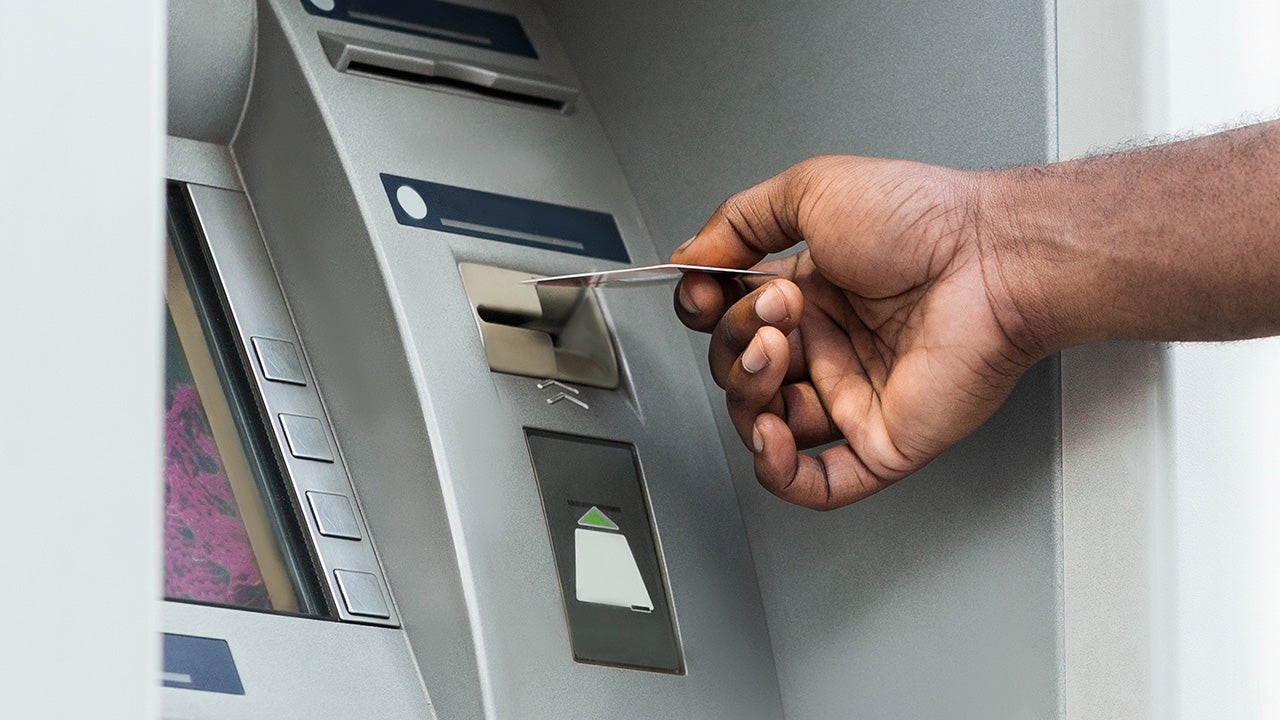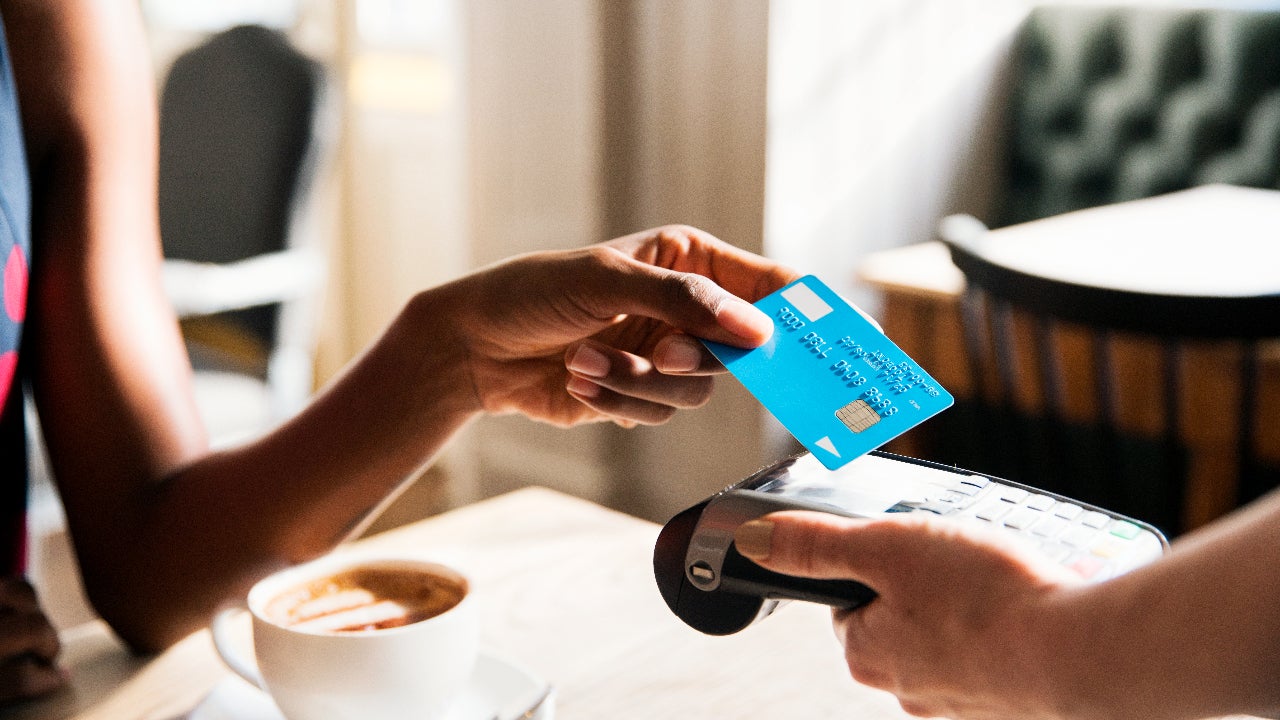How to spot a credit card skimmer

Key takeaways
- Credit card skimmers are devices thieves install onto credit card readers that can read and steal your credit card data.
- You can physically and visually detect the presence of a credit card skimmer if you know what to look for. Certain mobile apps can also help you detect them.
- Keep your card details and finances safe by choosing your ATMs carefully, paying with a credit card instead of a debit card, and checking your card statements regularly
You’re likely familiar with credit card readers, even if you haven’t heard the term. They are devices that allow you to swipe, tap or insert your credit cards for fast, convenient payment. But take care where you swipe your card: you don’t want to fall prey to a credit card skimmer.
What is a card skimmer?
A card skimmer is a device attached to a card reader, often ATMs or gas station pumps, to “skim” information about your credit or debit card. It may contain a stealth camera that records your PIN as you enter it. Or, in the case of most gas pump skimmers, it may contain a data-collecting device that stores and transmits your card data to an identity thief. More high-tech thieves might even 3D print a new keypad for a machine to use for recording PIN numbers. Card skimmers imitate the original hardware of the machines they are attached to, making them difficult to notice.
How to spot a credit card skimmer
While a card skimmer is designed to blend into the background, there are some things you can do to spot them.
A visual inspection
When examining a card reader for authenticity, there are a few things you can check. For starters, have a look at the placement of the card reader. Does it look a bit askew or off-center? People installing a card skimmer will often have to open parts of an ATM or a fuel pump to insert the skimming device. This can cause a seal on a fuel pump to break or a card reader to bulge out a bit more than usual. They may also have to remove certain security tapes with serial numbers to insert a skimmer. Check to see if these look like they’ve been tampered with. Another good thing to look at is the keypad. Does it look authentic? And lastly, have a look inside the mouth of the card reader itself. If it looks like anything is inside the reader, it’s best not to use it.
A physical inspection
Using your hands to feel around a card reader before you insert your card is also a good idea. Sometimes thieves will simply attach a skimmer to an existing card reader. Give the card reader a wiggle before you insert your card. If the reader feels loose or strange, don’t use it.
Use an identification app
Your eyes and hands are great tools for identifying skimmers, but it’s easy enough to miss something. A variety of cellphone apps have been developed to identify skimmers. For example, Bluetana was developed to identify the Bluetooth signature of credit card skimmers.
What to do if you find a skimmer
If you happen to find a credit card skimmer at a card reader, you want to do two things:
- Don’t make your transaction at that reader, or stop if you’ve already begun.
- Report what you’ve found to the police.
You can let the responding police officer investigate further, including allowing them to notify the owner of the card reader. While you could tell the owner of the gas station or ATM that you found a skimmer, you never know who installed the skimmer (like an employee or the owner), so its best left in the hands of police.
How to keep your card safe
Being able to visually identify a potential credit card skimmer is helpful in making sure that your credit card data isn’t compromised. But there are other things you can do to make sure your hard-earned credit card rewards and personal info don’t fall into the wrong hands.
-
Choose your ATMs selectively. Instead of simply using the closest machine, try to only use ATMs associated with established banks. ATMs attached to banks usually have a higher level of security that includes cameras recording all interactions with the machine and bank staff monitoring the area. There is also usually higher traffic at these machines, which means there is less opportunity for thieves to compromise the ATM. Whenever using any ATM, you should always make sure you cover the keypad when you enter your PIN to keep that information secure.
-
Use NFC transactions. NFC stands for near-field communication. An NFC transaction allows two devices to communicate with each other when they’re in proximity. NFC is the technology behind mobile phone payments. Because this kind of payment doesn’t require you to insert a card or enter a PIN, it gives skimmers less access to your data. In order to make NFC payments, you will have to turn on the NFC function for your phone. Once that’s done, you can enroll in a digital wallet and get started.
-
Purchase with a credit card, not a debit card. If you do have to make a payment with a card, it’s often better to use a credit card than a debit card. Debit cards are directly linked to your bank account, meaning your hard-earned cash becomes vulnerable in the hands of a data thief. Credit cards, on the other hand, are linked to a line of credit. If you have a fraudulent transaction show up on a credit card, that is the bank’s money, not yours. Plus, you have the opportunity to contest fraudulent charges on your card and also benefit from your credit card’s zero liability policy.
- Check your statements. When you do make purchases with your credit card, hold on to the receipts. When your monthly statement comes, check it against your receipts to make sure there aren’t any fraudulent charges. You can also check your account more regularly online through your issuer’s website. Regular account check-ins allow you to report a compromised account sooner rather than later and prevent further fraudulent charges.
- Turn on card transaction notifications. Most issuers offer a feature on their mobile app that will text or email you when your card is used for a transaction. Turning this on can help you more easily detect any unusual activity on your card.
What to do if your card has been skimmed
If you suspect that your card might have been skimmed, here are some steps to take to protect your finances.
- Contact your card issuer as soon as possible. Your issuer can freeze your old card and issue you a new one to keep your information safe. You can do this over the phone
- File a fraud report if necessary. If you’ve identified a fraudulent charge on your account, request your bank open an investigation into the charge. If the charge is confirmed fraudulent, your bank will typically reimburse you for the charge and any relevant fees.
- Continue monitoring your account. Keep an eye on your card statements and look for any fraudulent activity you can report to your issuer.
- Open a credit monitoring account. A credit monitoring service will keep tabs on your credit information and can alert you in the event of suspicious events, such as a change in your credit score or credit inquiries by lenders.
- Update any relevant passwords or card security measures. Once you get your new card, take the time to update your PINs and passwords associated with your cards. Using the same login information repeatedly or across multiple accounts only increases the risk of your credentials falling into the wrong hands.
You can also report the skimming incident to the Federal Trade Commission (FTC). The FTC monitors fraud cases in the US and can offer you a full report on the incident after an investigation.
The bottom line
If something seems “off” about the card reader you’re using at the ATM or gas station, take a closer look: Credit card skimmers can look very similar to the real thing. Taking a few simple precautionary steps can help protect your credit card information and personal information and let you shop worry-free.
Why we ask for feedback Your feedback helps us improve our content and services. It takes less than a minute to complete.
Your responses are anonymous and will only be used for improving our website.






